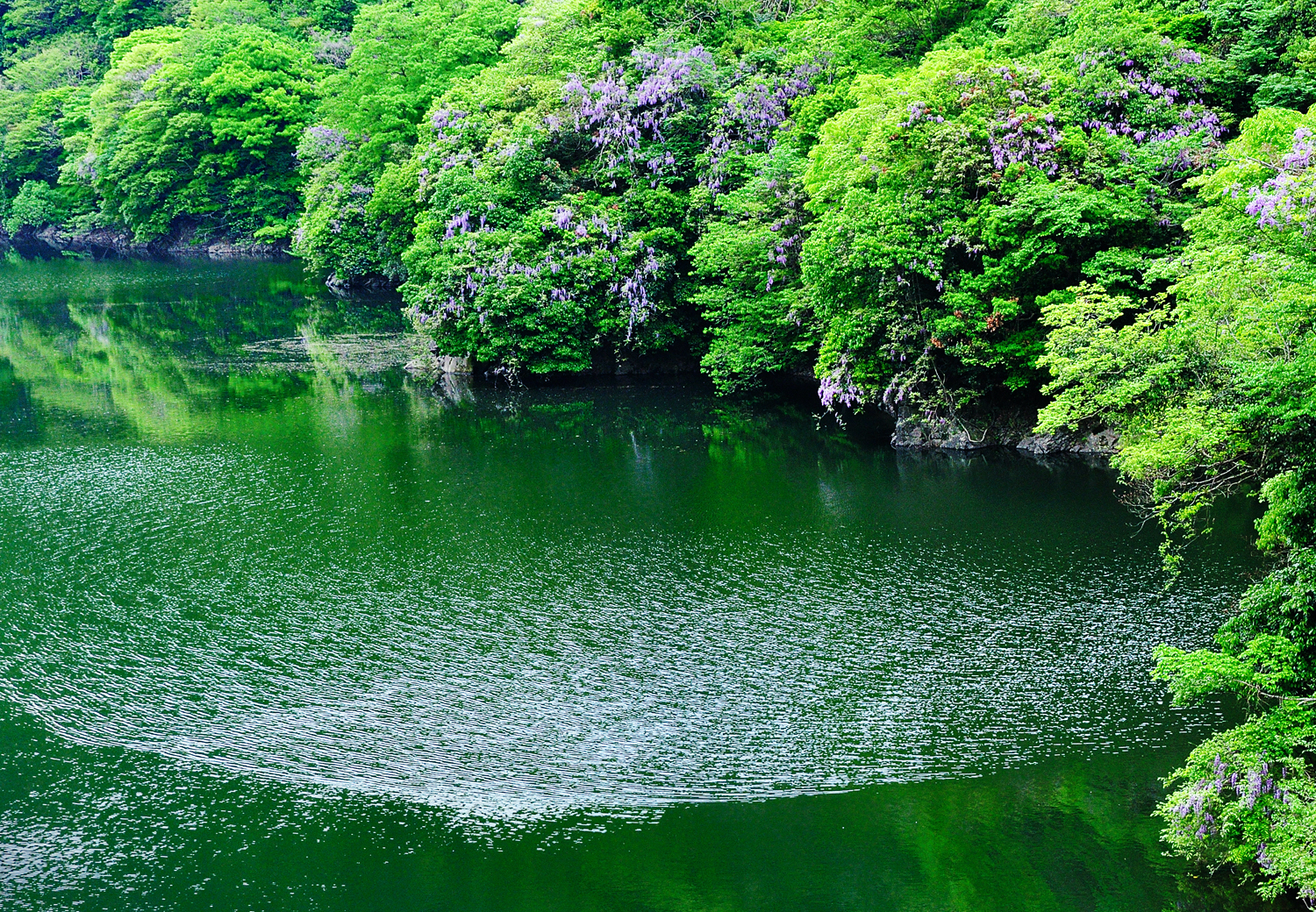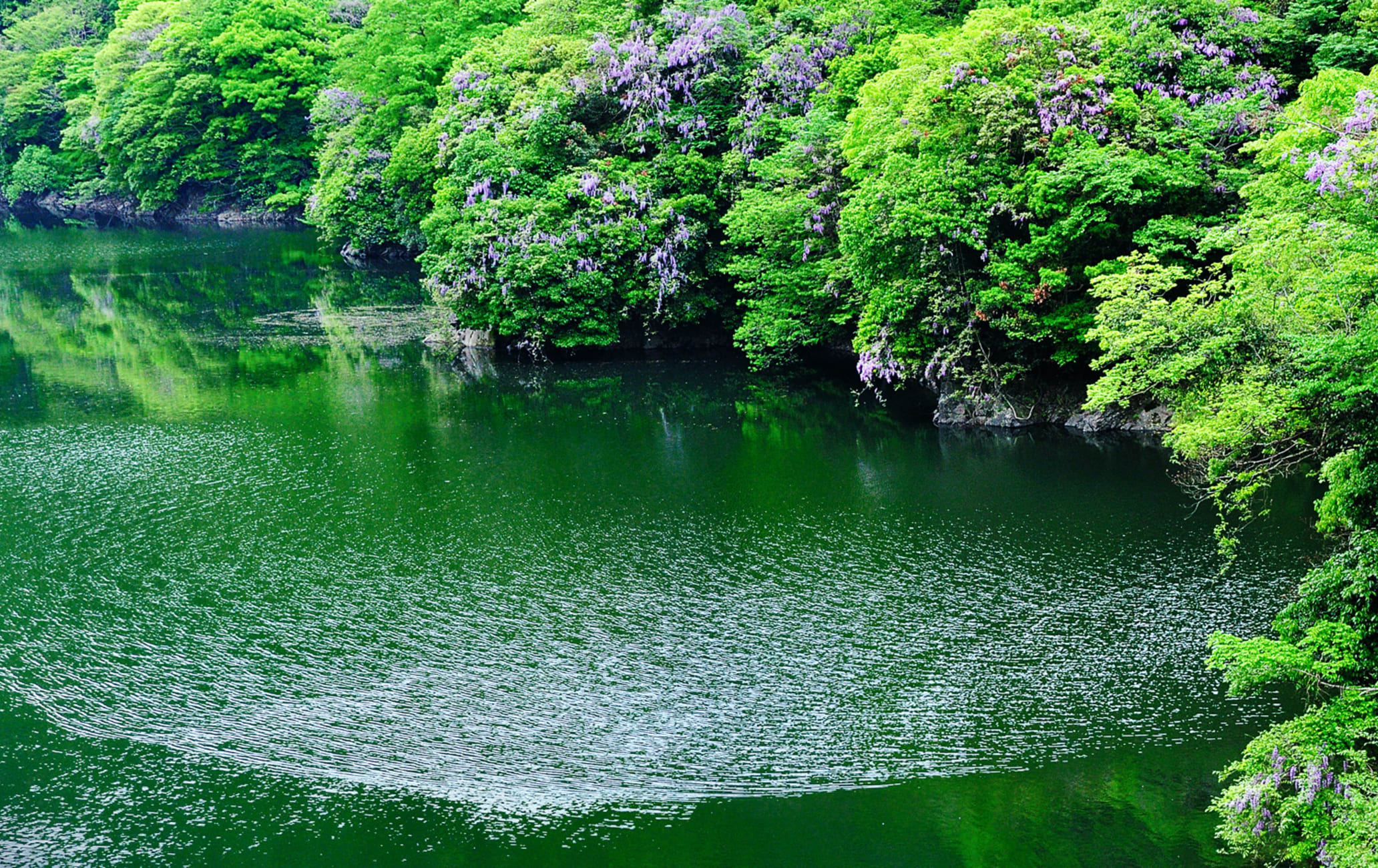©Uji City
Eine für Tee, die Teezeremonie und ihr romantisches Viertel am Fluss bekannte Stadt
Die malerische Stadt Uji ist ein Hauptschauplatz der „Geschichte vom Prinzen Genji“, eines literarischen Meisterwerks aus dem 11. Jahrhundert. Mit ihren Teefeldern, Teeläden und heiligen Stätten ist diese Stadt ein beliebtes Tagesausflugsziel von Kyoto aus.
Durch Uji fließt auch der gleichnamige Fluss. An diesem können Sie entlang spazieren oder Bootsfahrten unternehmen. Außerdem gibt es zahlreiche Restaurants und Läden, in die Sie unterwegs hineinschauen können. Die aus der Geschichte vom Prinzen Genji berühmte Uji-Brücke gilt als einer der romantischsten Orte in Kyoto. Die Stadt erhebt auch den Anspruch, auf ein historisches Teehaus und das Gebäude eines Shinto-Schreins zu beherbergen.
Nicht verpassen
- Eine Kostprobe des lokal angebauten Grüntees
- Einen Spaziergang entlang des Uji-Flusses und Beobachtung der Kormoranfischerei nach Einbruch der Dunkelheit
- Ujigami, das wohl älteste bestehende Schreingebäude Japans
- Die alten Schätze im Byodoin-Tempel, einer Welterbestätte
Anfahrt
Uji wird von zwei Bahnhöfen an der JR und der Keihan Line bedient und kann in weniger als 1 Stunde von Kyoto aus erreicht werden.
Nehmen Sie vom Bahnhof Kyoto die Nara Line für die rund 7-minütige Fahrt zum JR-Bahnhof Uji. Vom Bahnhof Demachiyanagi, der Endstation der Keihan Line im Norden von Kyotos Zentrum, dauert die Fahrt zum Keihan-Bahnhof Uji etwa 40 Minuten.

©Uji City

©Uji City
Die Ursprünge des Grüntees
Buddhistische Mönche brachten den Grüntee im 7. Jahrhundert von China nach Japan. Er wurde in Pulverform als verdauungsförderndes Mittel und zur Förderung der Konzentration während langer Meditationsstunden konsumiert. Erst seit der Kamakura-Periode (1192–1333) wird er als Getränk genossen. Dieser pulverförmige Grüntee wurde zum Kernstück der Teezeremonie, die in den Adelsschichten rasch an Popularität gewann.
Eisai (1141–1215), der Priester, der den Zen-Buddhismus nach Japan gebracht haben soll, beschrieb die Vorzüge des Grüntees und unterwies die Uji-Priester in seinem Anbau. Da Uji einer der ersten Anbauorte für Grüntee war, wurde der Name der Stadt zum Synonym für das Getränk und steht heute in ganz Japan für die Güte seines Grüntees.
Schlendern Sie die von Restaurants gesäumte Straße Byodoin Omotesando entlang, wo Sie die unverwechselbaren Umami-Aromen von grünem und geröstetem Tee in einem Angebot von leckerem Speiseeis und Desserts und selbst in Soba-Nudeln finden können.
Uji-Teefest
Das Uji-Teefest findet am ersten Sonntag im Oktober am Koshoji-Tempel statt. Während des Fests bringen Priester vor den Statuen der Persönlichkeiten, die dazu beitrugen, Uji als Zentrum des Tees zu etablieren, zeremonielle Teeschalen als Opfergaben dar.
Japans ältester Teeladen
Der älteste Teeladen in Japan findet sich hier in Uji. Tsuen ist seit dem Jahr 1160 im Geschäft und wird nun vom 24. Oberhaupt ein- und derselben Familie geführt. Der Laden bietet köstliche Grüntee-Parfaits und Reisbällchen an. Durch seine erstklassige Lage am Ufer des Uji bietet er sich hervorragend für eine Erholungspause an.
Verkostung und Einkauf von erstklassigem Tee
Byodoin Omotesando ist Ujis geschäftige, 300 Meter lange Straße, gesäumt von Läden, die Souvenirs rund um den Tee und leckere Snacks verkaufen. Besuchen Sie den beliebten Teeladen Taihoan, wo Sie für 1000 Yen an einer traditionellen Teezeremonie, bestehend aus einer Schale Matcha und einer japanischen Süßigkeit, teilnehmen können.
Tee- oder Töpferkurse
Für eine praktische Erfahrung können Sie an einem Workshop in Fukujuen Ujicha Kobo teilnehmen, um mehr über die Teeverarbeitung zu erfahren und sich darin zu üben, Matcha zur perfekten Konsistenz zu mörsern. Außerdem haben Sie die Möglichkeit, unterschiedliche Aufgüsse zu kosten. Auf derselben Seite des Flusses befindet sich der Asahiyaki-Keramikworkshop, wo Sie das Töpfern an der Töpferscheibe ausprobieren können.
Ujis romantisches Flussufer
Der Uji fließt mitten durch die Stadt. Tagsüber können Sie geruhsame Bootsfahrten auf dem Fluss buchen; abends finden Vorführungen der Kormoranfischerei statt.


©Uji City
Die erstmals um 646 erbaute Uji-Brücke ist in mehreren japanischen Kunstwerken abgebildet und wird in der japanischen Literatur erwähnt; das bekannteste Werk ist die Geschichte vom Prinzen Genji. Dieser berühmte Roman beschreibt die Eskapaden des fiktiven Prinzen Genji und seiner vielen Geliebten und bietet wertvolle Einblicke in das Leben des Adels im 11. Jahrhundert.


©Uji City
Japans ältestes Shinto-Schreingebäude
Wissenschaftler haben durch umfassende Analysen des Holzes festgestellt, dass die ältesten Bauten des Ujigami seit 1060 bestehen; somit ist es das älteste noch erhaltene Shinto-Schreingebäude in Japan.
Sie werden möglicherweise feststellen, dass das Dach der Haupthalle eine ausgeprägte Rundung hat, die im so genannten Nagare-zukuri-Architekturstil gebaut ist.
Der Edelstein in Ujis Krone
Der im Jahr 1052 errichtete Byodoin-Tempel ist dem Amida Buddha geweiht, dessen Statue mit Blattgold überzogen ist. Die Phönix-Halle des Tempels wird von zwei Phönixen gekrönt, die Schutz symbolisieren. An den Innenwänden kann man noch die blassen Reste kunstvoller Wandbemalungen sehen.
Die Führung bringt Sie in die Halle und auch in das zugehörige Museum, das Nachbildungen der Wandbemalungen enthält, wie sie wohl ursprünglich in leuchtenden Farben ausgesehen haben. Die 52 Bodhisattva-Statuen mit Musikinstrumenten werden dem Meisterbildhauer Jocho zugeschrieben.

©Uji City













































